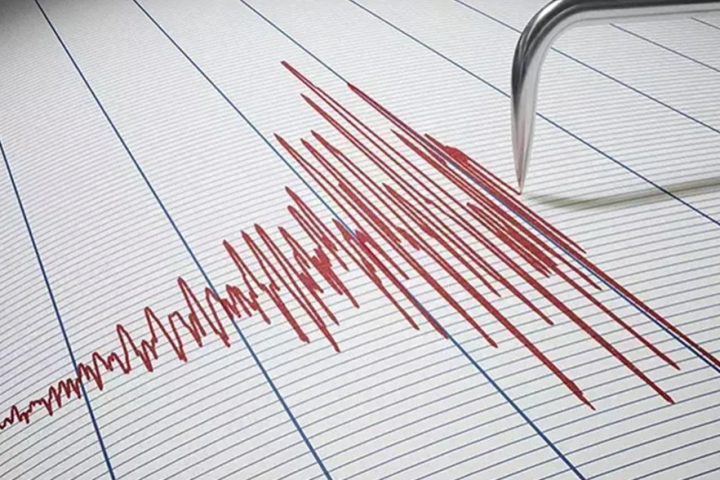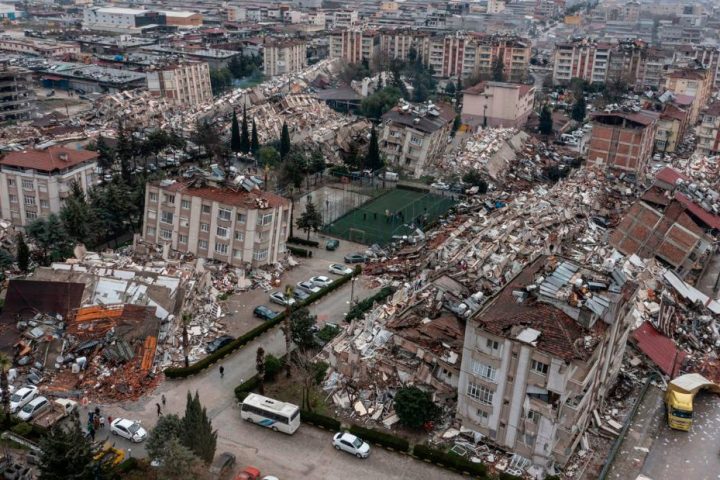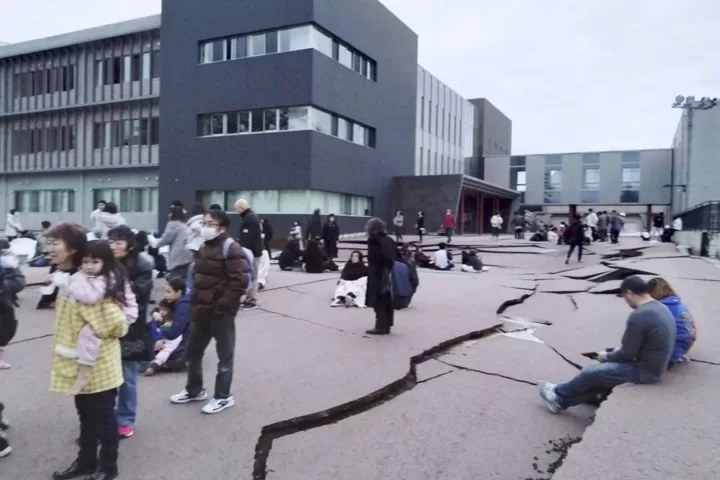On Monday, a massive earthquake slammed central Japan, killing at least one person, demolishing buildings, knocking out electricity to tens of thousands of households, and forcing inhabitants to escape to higher ground in some coastal districts.
The 7.6 magnitude quake generated waves of around 1 meter along Japan’s west coast and neighboring South Korea, with authorities warning that greater waves might follow.
Tsunami warnings have been issued by the Japan Meteorological Agency (JMA) for the prefectures of Ishikawa, Niigata, and Toyama. A significant tsunami warning was issued for Ishikawa, the first since the March 2011 earthquake and tsunami that hit northeastern Japan, however it was subsequently lowered.
Tsunami warnings have also been issued in some places by Russia and North Korea.
Houses were demolished, fires broke out, and army forces were ordered to assist with rescue efforts, said to government spokeswoman Yoshimasa Hayashi, who added that officials were still analyzing the damage.
According to local police, one elderly man was pronounced deceased following a building fall in Shika Town, Ishikawa.
Fumio Kishida, Japan’s Prime Minister, told reporters that he has directed search and rescue workers to do everything necessary to save lives, despite the fact that access to quake-affected regions is difficult owing to blocked highways.
More powerful quakes in the area, where seismic activity has been simmering for more than three years, are possible in the coming days, according to JMA spokesman Toshihiro Shimoyama.
“I urge people in areas where tsunamis are expected to evacuate as soon as possible,” Kishida said.
“Tsunami! Evacuate!” a bright yellow warning flashed across television screens advising residents in specific areas of the coast to immediately evacuate their homes.
Images carried by local media showed a building collapsing in a plume of dust in the city of Suzu and a huge crack in a road in Wajima where panicked-looking parents clutched their children.
There have been reports of at least 30 collapsed buildings in Wajima, a town of around 30,000 known for its lacquerware, and a major blaze has engulfed several buildings.
The quake also jolted buildings in the capital Tokyo, some 500 km from Wajima on the opposite coast.
More than 36,000 households had lost power in Ishikawa and Toyama prefectures, areas where temperatures were set to drop to near freezing overnight, according to utilities provider Hokuriku Electric Power. Telecoms operators also reported phone and internet outages in some areas.
Forty train lines and two high-speed rail services to the quake-hit area halted operations, while six expressways were closed and one of Ishikawa’s airports was forced to shut due to a crack in the runway, transport authorities said.
Japanese airline ANA turned back planes headed to airports in Toyama and Ishikawa, while Japan Airlines cancelled most of its services to the Niigata and Ishikawa regions.
Nuclear plants
The quake comes at a sensitive time for Japan’s nuclear industry, which has faced fierce opposition from some locals since a 2011 earthquake and tsunami triggered nuclear meltdowns in Fukushima. Nearly 20,000 people were killed and whole towns devastated in the disaster.
Japan last week lifted an operational ban imposed on the world’s biggest nuclear plant, Kashiwazaki-Kariwa, which has been offline since the 2011 tsunami.
Japan’s Nuclear Regulation Authority said no irregularities have been confirmed at nuclear power plants along the Sea of Japan, including five active reactors at Kansai Electric Power’s Ohi and Takahama plants in Fukui Prefecture.
Hokuriku’s Shika plant in Ishikawa, the closest nuclear power station to the quake’s epicenter, had already halted its two reactors before the quake for regular inspections and saw no impact from the quake, the agency said.
Monday’s quake struck during the Jan. 1 public holiday when millions of Japanese traditionally visit temples to mark the new year.
Images showed the remains of a smashed stone gate strewn at the entrance of a temple in Kanazawa, a famous tourist destination in Ishikawa, while nervous worshipers looked on.
Ayako Daikai, a Kanazawa resident, said she and her husband and two children fled to a neighboring elementary school shortly after the earthquake struck. Evacuees were crammed into classrooms, stairwells, corridors, and the gymnasium, she claimed.
“We haven’t decided when we’ll return home yet,” she told Reuters by phone.
Tourists who had come to Japan’s mountainous Nagano area for the start of the winter sports season felt the shock as well.
Johnny Wu, a 50-year-old Taiwanese snowboarder, was waiting for a shuttle bus return to his hotel in Hakuba when the earthquake struck, rattling windows and shaking snow off rooftops and overhead power lines.
“Everyone was terrified at the time.” I’m a little better because I’m from Taiwan and have had a lot of experience. But… I’m still concerned that (the quake) may worsen,” he remarked.





